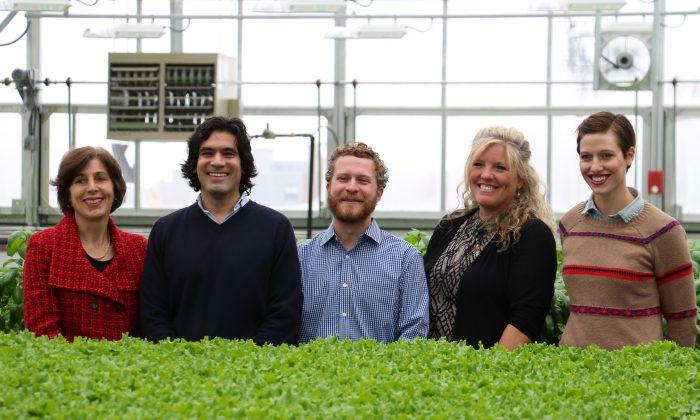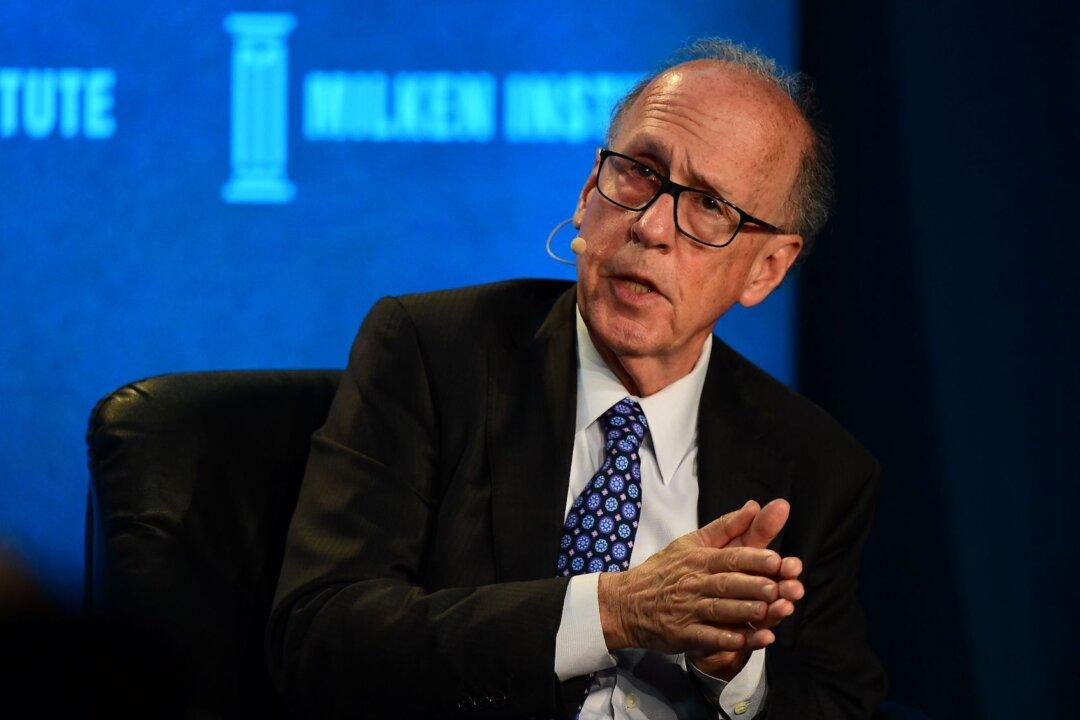NEW YORK—Brooklyn’s first Whole Foods store is the greenest supermarket in the United States. Using energy efficient technologies, this branch will save more than $369,300 in annual energy costs. It is 60 percent more energy efficient than standard supermarkets, according to the New York State Energy Research and Development Authority.
This Whole Foods store, located in Gowanus, is designed to be energy efficient both inside and out.
Solar panel canopies in the parking area serve as covers for the cars but also generate enough electricity to offset 29 percent of the store’s annual energy use. Small wind turbines power LED lighting for the parking lot. Larger wind turbines provide electricity for charging stations for electric vehicles. Thirty thousand-gallon tanks under the parking lot collect rainwater. When needed, the water is purified and used for watering plants. It is also used for toilet flushing in the store.
Energy Efficient Greenhouse
Gotham Greens, an innovative urban agriculture company based in Brooklyn, designed the rooftop greenhouse. The greenhouse serves as an insulator for the store below, and the store acts as a heat source for the greenhouse in winter months. There, produce is grown in a hydroponics system. This space is used to cultivate leafy greens such as iceberg lettuce and basil, as well as tomatoes.
Instead of pesticides, predatory insects such as ladybugs and wasps are used to keep harmful insects away.
Once harvest time comes, the produce is sent directly downstairs for sale. “That proximity to the market really eliminates the long distance food transportation and all the associated carbon emissions,” said Virag Puri, co-founder of Gotham Greens.
The store also has a combined heat and power (CHP) system that captures CO2 exhaust and recycles it to serve as a nontoxic, Freon-free refrigeration and air conditioning unit. This system also generates electricity. Combined with the solar panels in the parking lot, the facility is almost at net zero electricity.
“When we save energy and we save money, that allows us to be more competitive and allows us to keep prices competitive for customers,” said Kathy Loftus, Whole Foods Market’s global leader of sustainable facilities.
Better Building Challenge
The Gowanus location is used as a showcase for Whole Foods Market’s participation in the Better Building Challenge, an initiative aimed at making American commercial and industrial buildings 20 percent more energy efficient by 2020. The company announced its participation today.
In addition to establishing showcase projects, Whole Foods Market must work toward reaching an energy savings goal of at least 20 percent over 10 years at its stores nationwide.
In 2011, the Obama administration launched the Better Buildings Challenge. Since then, more than 170 public and private organizations have committed to the challenge. The federal government provides technical and financial assistance to participating organizations. For additional financial support, the program connects participants with financial organizations and utilities.
Yi Yang is a Special Correspondent in New York.





Friends Read Free